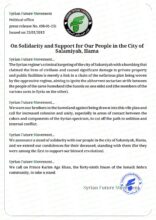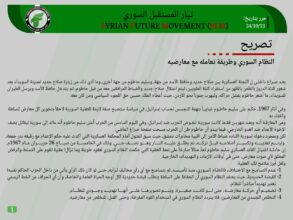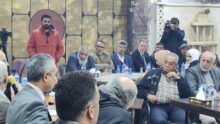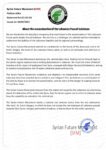The Syrian Composition: The Maker of Coups
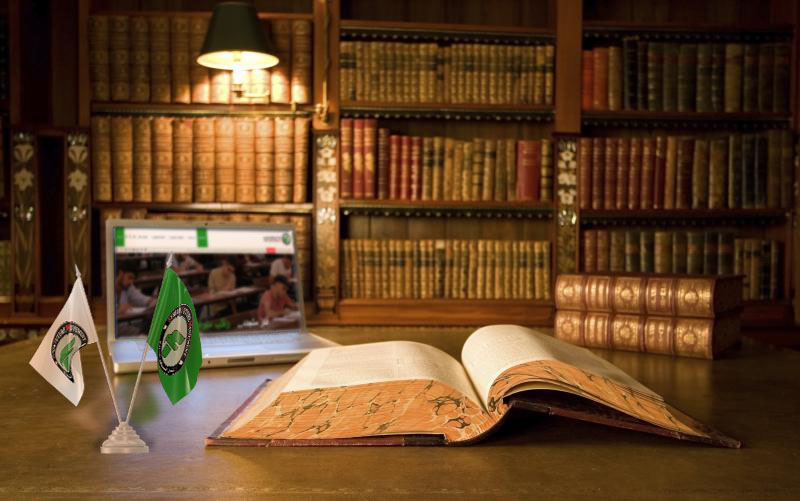
Curzio Malaparte, in his book “Techniques of Coup d’État,” argues that the concept of a coup applies not only to military and political forces but also to civilian powers. A coup is a swift attempt to seize power, driven either by external pressure, internal void, or both.
In Syria, coups began with Husni al-Za’im’s coup on March 29, 1949. According to Nadhir Fansah in his book “Days of Husni al-Za’im,” no one knew what a military coup was until then. Under this coup, the military, led by Husni al-Za’im, assumed both legislative and executive powers, which al-Za’im later personally held. He also became the head of the government, forming it by presidential decree and retaining the interior and defense portfolios. On June 26, 1949, he held the first popular referendum in the Middle East, winning with 99.9% of the vote, and appointed Muhsin al-Barazi as the head of the government.
Subsequently, Sami al-Hinnawi led a coup on August 14, 1949, seizing power and executing President Husni al-Za’im and his Prime Minister Muhsin al-Barazi. Al-Hinnawi appointed Hashim al-Atassi to form a new government and handed him legislative and executive powers on the same day, pending free presidential and legislative elections.
Sami al-Hinnawi’s coup did not last long, as Adib Shishakli launched a new coup on December 19, 1949. Hashim al-Atassi remained president in what was known as dual rule until November 28, 1951, when Shishakli executed a fourth coup, taking power directly after accusing al-Atassi and his party (the People’s Party) of treason and attempting to restore the monarchy.
There is much to be said about the causes of military coups. One could point to the escalating crisis of distrust and mutual accusations between military and political figures in early 1949, following criticisms of the military leadership by some parliamentarians and political leaders. Hashim Othman, in his book “Modern History of Syria,” asserts that examining the events that prompted the coup reveals its cause clearly—it wouldn’t have happened without the misconduct of the Prime Minister, the Defense Minister, and the President himself. They exploited a military corruption conspiracy and exaggerated incidents involving corrupt contracts, notably the supply of adulterated ghee to soldiers, which President Shukri al-Quwatli discovered during an inspection in March 1949. Al-Quwatli accused Chief of Staff Husni al-Za’im of corruption, treason, and conspiring with Jordan’s King Abdullah I.
Between 1949 and 1970, Syria experienced twenty coups, both successful and failed. The country had the necessary conditions for coups beyond the reasons mentioned. Reviewing past coups shows that none before Hafez al-Assad’s rise were full-fledged military coups, as the coup leaders didn’t unify the state institutions under one authority as Assad did. On March 8, 1963, Ba’ath Party officers led by the Military Committee overthrew the secessionist government formed after Syria’s separation from Egypt in 1961. The Ba’ath Party began to consolidate power in Syria from that point, but with the same incomplete centralization as previous coups. On February 23, 1966, the left-wing faction of the Ba’ath Party, led by Salah Jadid, overthrew the traditional Ba’ath leadership led by Amin al-Hafiz. Then, on November 13, 1970, Defense Minister Hafez al-Assad led a coup against Salah Jadid, taking control of all state institutions under a unified authority with himself at the top. Muhammad Amir Nasher al-Nu’m’s book “Jurat al-Ham” aptly describes Assad’s method of building his coup like the solid palace built by Sennar for the Byzantine commander, a structure relying on a single stone that, if removed, would collapse the entire palace. In “Assad’s Syria,” that stone was Assad himself, allowing him to remain in power even after his death in 2000, succeeded by his son Bashar al-Assad.
Muhammad Jamal Barout, in his study “The Failure to Build the State and the End of the First and Last Parliamentary Republic in Syria” published in “The Contemporary Arab State: Theoretical and Case Studies” by the Arab Center for Research and Policy Studies, notes that the coup marked the end of Syria’s first and last parliamentary republic and the start of the authoritarian state. The coup succeeded not because it involved the entire army, but because the parliamentary republic was already weak, predisposed to authoritarianism, as evidenced by the slogan “Leader President,” the creation of a ceremonial throne day, the nationalists’ failure to build the state, their fragile commitment to the republic, their ruling elite exploiting state resources for personal gain, impunity for those who enriched themselves at the public’s expense, suppression of public freedoms, military intervention in civil and political disputes, regional grievances, constitutional breaches, and election fraud.
Azmi Bishara traces the politicization and adoption of ideologies within the Syrian military to the first graduates of the Homs Military Academy in 1945. Leftist and nationalist ideas spread among soldiers, particularly after the 1948 war defeat and the emergence of military coups. Rising ideologies and parties like the Ba’ath Party, founded by Michel Aflaq and Salah al-Din al-Bitar in 1947, and the Arab Socialist Party, founded by Akram al-Hourani in 1951, played a central role in politicizing the military with rhetoric about nationalism and defending workers’ and peasants’ rights. These ideas resonated with soldiers from rural and middle-class backgrounds, opposing the ruling elite, who were large landowners, and advocating for agrarian reform.
Many classic studies on Syria, including works by Patrick Seale and Philip Khoury, claim that Syrian Sunnis were reluctant to join the early Syrian army and that the French mandate did not want them there. However, contemporary studies, such as Lebanese researcher Hisham Bu Nasif’s doctoral dissertation at the University of Utah in 1989, challenge Seale and Khoury’s assertions. The French actually sought to include Sunni Arabs in the special forces for demographic and political reasons, including benefiting from their capabilities and fearing the negative impact of deteriorating relations with Sunnis in Syria and Lebanon on their influence in Algeria, Tunisia, and Morocco.
Thus, Syria’s composition itself allowed for the passage of military coups. Without addressing this composition, even if the current Syrian crisis ends with some settlement, the country may continue to oscillate between various incomplete coups until a coup occurs that prevents their recurrence.
The Syrian Future Movement (SFM)’s political bureau warns against neglecting the Syrian composition, which strongly attracts military coups. They propose learning from countries that have escaped the curse of military coups, with Turkey being a prime example. Turkey’s composition was somewhat similar to Syria’s, but it gradually changed, leading to the failure of the recent coup attempt. This change can be framed in four points, which they recommend applying in Syria:
- The significant division within the Turkish military, preventing one faction from seizing control. During the coup attempt on July 16, those who led the coup were second-tier leaders in the air and ground forces, while those who opposed it were primarily from the Chief of Staff and internal security forces, showing the importance of preventing any faction from monopolizing military power.
- Legal reforms limiting the military’s reach over the past years contributed to the coup’s failure. The military was removed from cities, and security responsibilities were handed to the police and security forces, which were placed under the Interior Ministry, unlike previous periods when they were under the Chief of Staff or Defense Ministry. This specific reform should be applied in Syria in any forthcoming settlement.
- No political forces or parties supported the coup publicly. Even the coup leaders did not reveal their political agenda, while Erdogan capitalized on this by calling on the public to defend democracy. This made the coup leaders appear as adventurers without political or popular support, leading to their swift containment. This highlights the importance of having strong political backing against military coups and ensuring all Syrian political forces reject any direct or indirect recognition of military coups.
- In addition to the Turkish government’s actions against the coup, opposition parties quickly opposed it, contributing to international unity against the coup. The swift shift from reserved to outright opposition by Russia, the US, and Europe was driven by a desire to maintain Turkey’s democracy and avoid chaos. Therefore, political consensus in Syria should be built on rejecting military coups and ensuring no justification is given for them, similar to Akram al-Hourani’s stance against the first Syrian coup.
The Syrian Future Movement (SFM) cautions against repeating historical narratives that may serve as a backdrop for new consecutive military coups. They recommend applying the four frameworks learned from the Turkish experience and encourage research centers to study Syria’s composition and its susceptibility to coups, whether military or civilian. They also warn against any backdoor that might allow the return of the coup curse in Syria, especially in this delicate phase, which could perpetuate Assad’s legacy under new facades and names tied to his regime’s control over Syria and Lebanon.
Here is the translation of the text:
Jomaa Mohammad Laheep
Political Bureau
Research and Studies Department
Articles
Syrian Future Movement

